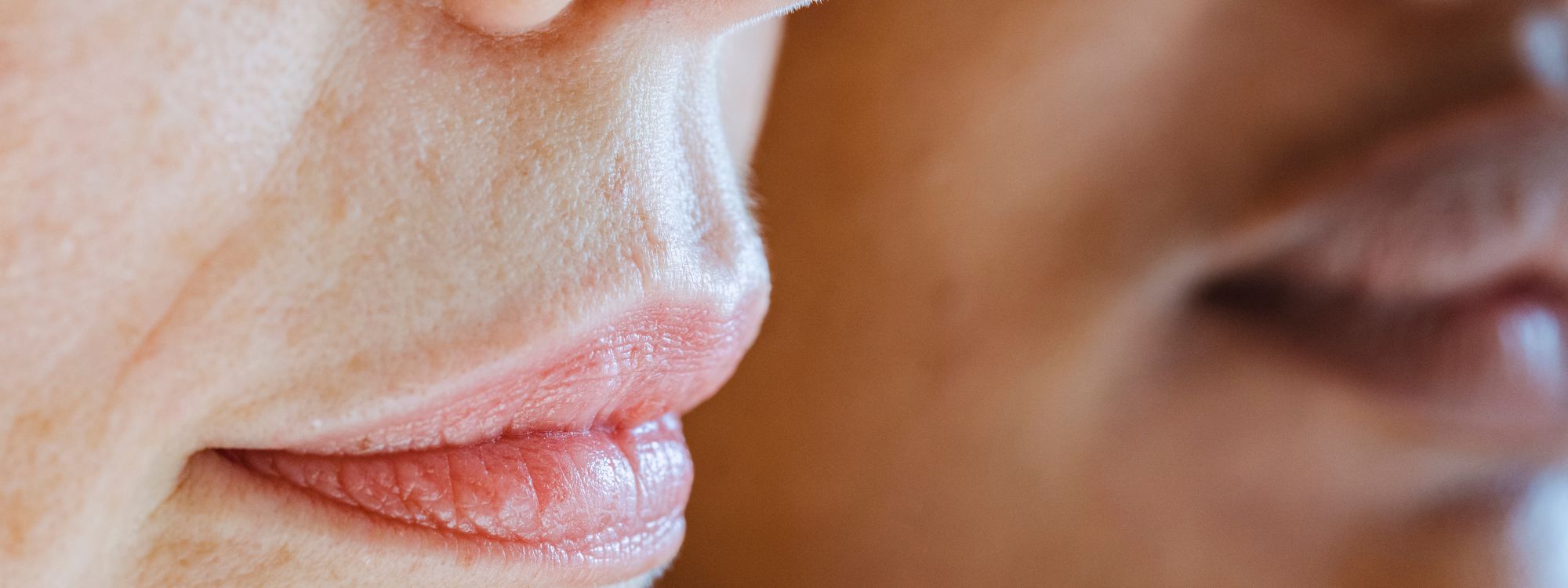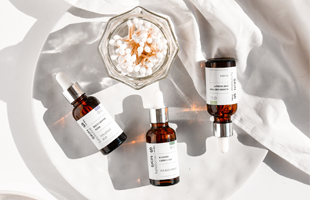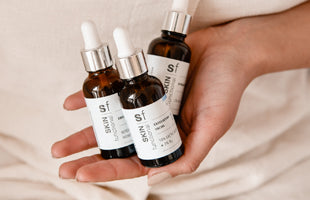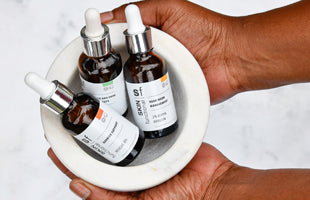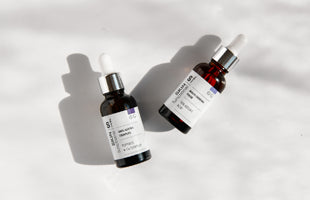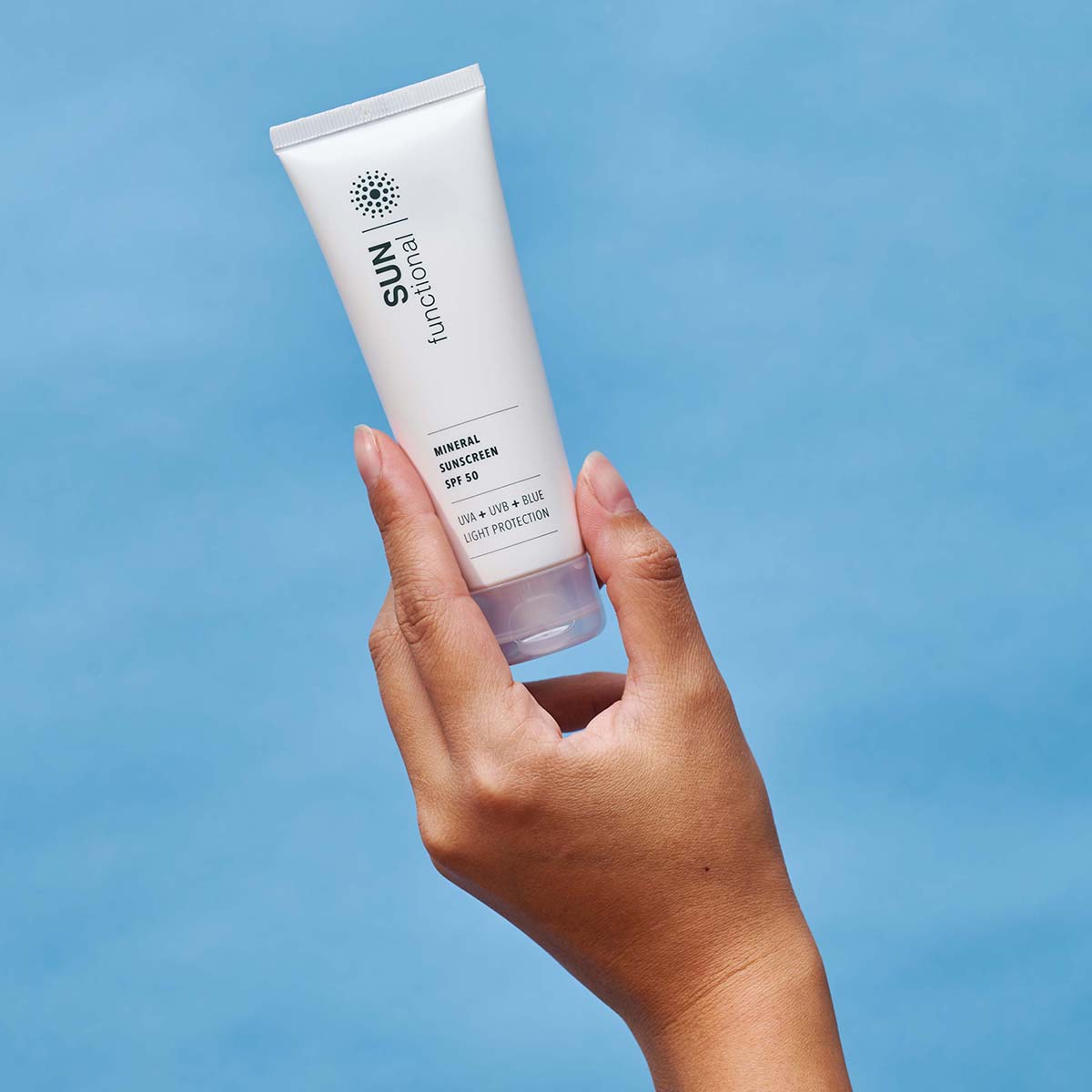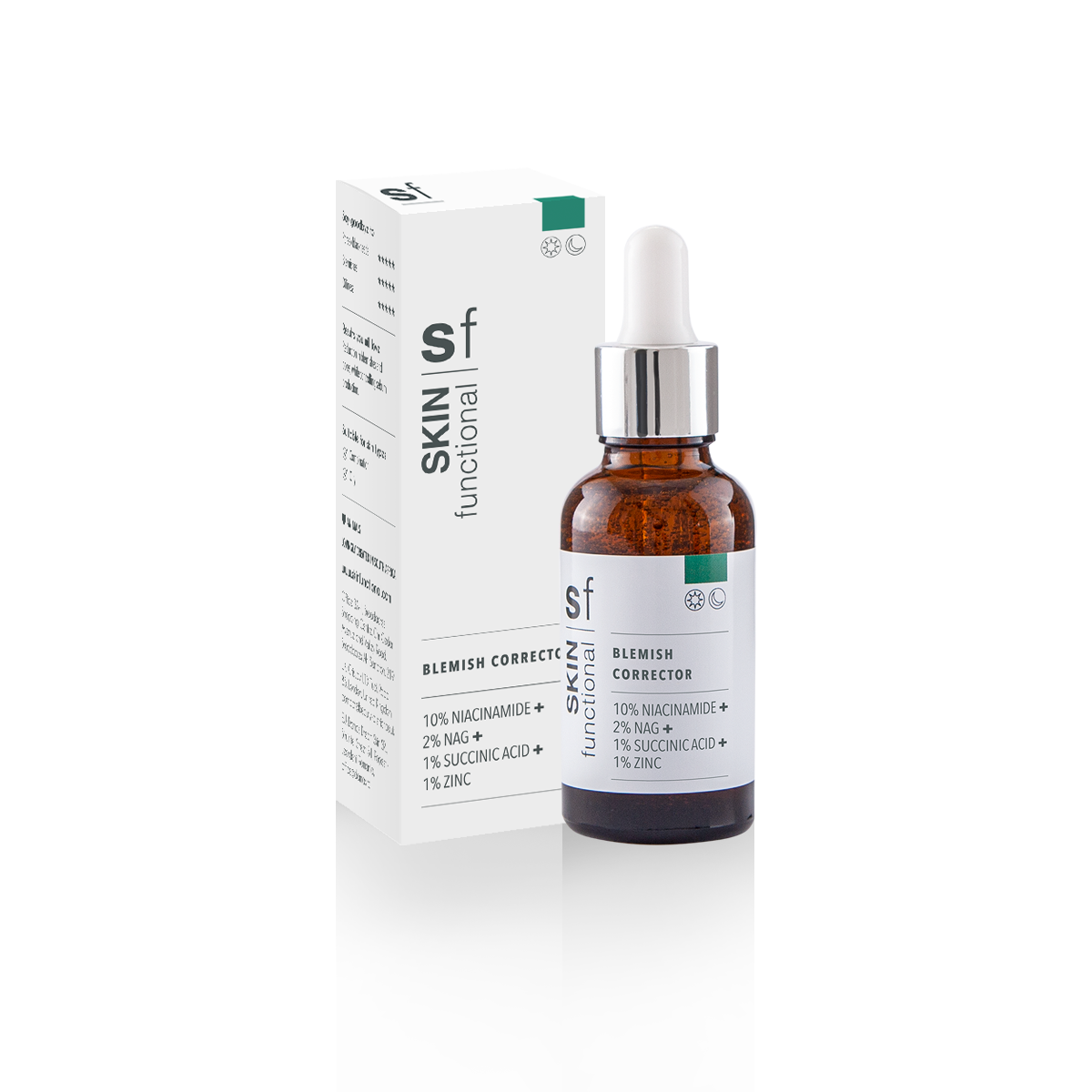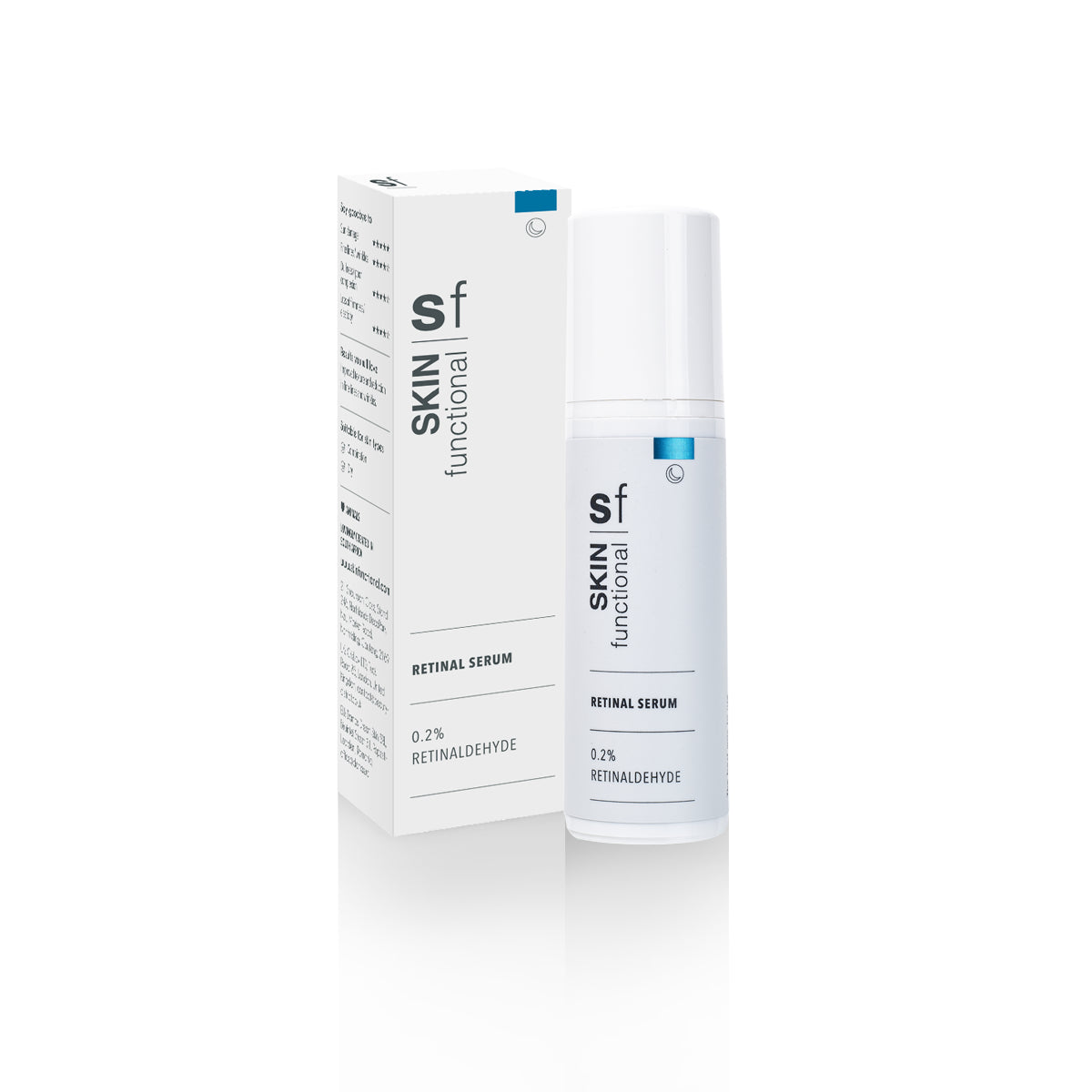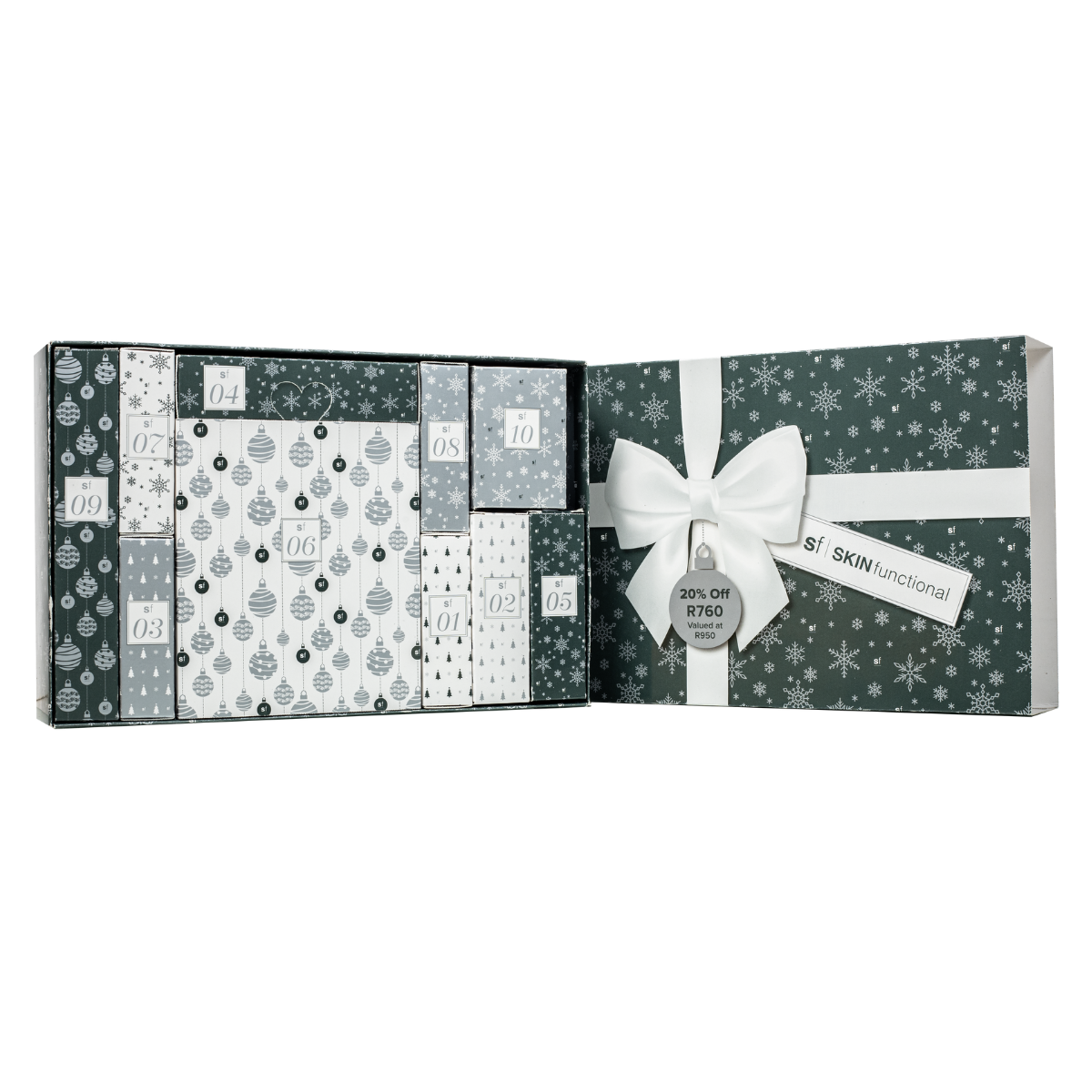See the Power of SKINtelligence Smart Skincare. Real Results.
Welcome to SKINtelligence—where smart skincare meets high-performance formulations to help you take control of your skin, one informed decision at a time.
We know skincare can feel overwhelming. With endless promises and confusing ingredient names, it’s hard to know what truly works. That’s where SKINtelligence comes in. This collection is designed to simplify your skincare journey by pairing expert knowledge with powerful, science-backed products that actually deliver results.
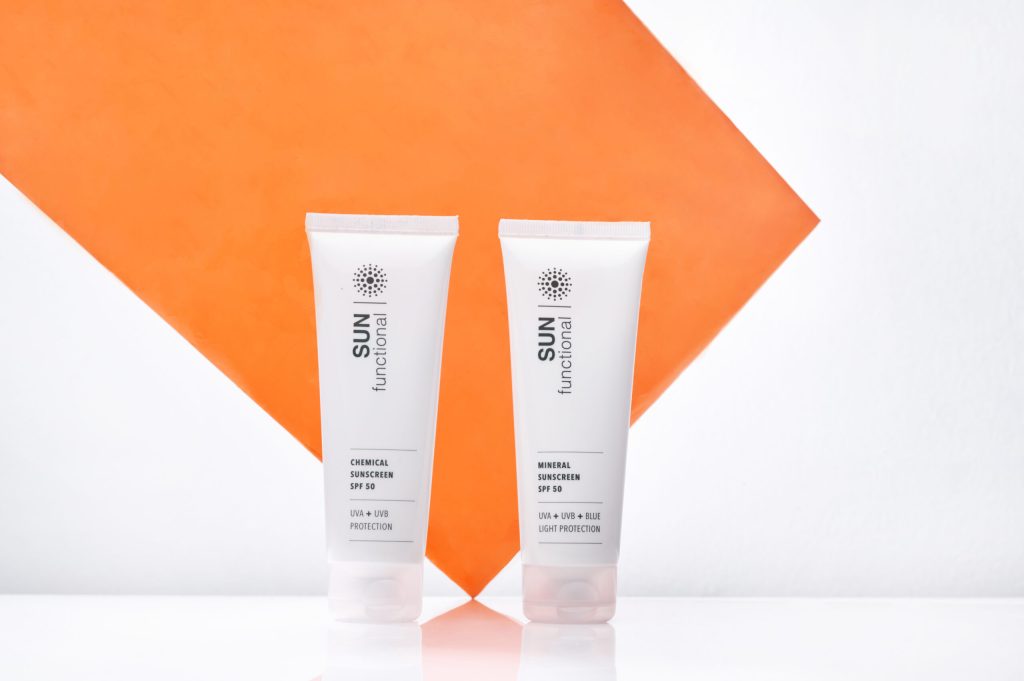
How are dark marks in the skin best treated?
How are dark marks in the skin best treated?
Once a pigmented area or spot has formed, improvement of the area requires two distinct steps. The first step is to reduce the amount of excess pigment produced by the skin in that area, and the second is to increase the speed of skin shedding over that dark mark.
Reducing pigment production is done using topical ingredients that can interact with and suppress melanocytes, which are pigment-producing cells. Accelerating shedding of the skin is easily achieved with controlled exfoliation over the dark mark, usually with some form of acidic substance.
How can I manage enlarged pores?
How can I manage enlarged pores?
Skin pores, which are follicles, can be considered as hundreds of tiny chimneys that allow sebum (oil) to flow out onto the surface of the skin. Follicle size depends largely on the volume of oil being released through it and also the degree of blockage. As we age, the size of the follicle naturally enlarges.
Homecare with BHA (Beta Hydroxy Acid) solutions and Retinol containing products may assist to reduce blockages of follicles by managing sebum production.
Why do I get blackheads?
Why do I get blackheads?
A blackhead is a skin follicle that has become filled up with oil and dead skin cells. Usually, skin follicles will release sebum and dead skin cells onto the surface of the skin. Due to hormones in the blood, sebum becomes thicker, and the dead skin cells become stickier, resulting in a solid plug. This plug turns black due to an interaction with oxygen in the air. The higher the amount of androgen hormone circulating in the blood, the higher the likelihood of blackheads, also known as comedones.
Homecare with BHA (Beta Hydroxy Acid) solutions and Retinol containing products may assist to reduce blockages of follicles by managing sebum production.
How do I get plump, firm skin?
How do I get plump, firm skin?
Skin feels firm and plump when there is plenty of water trapped in the deeper living layers. Hyaluronic Acid is a specialised carbohydrate molecule produced in healthy skin that acts as a powerful water attractor and binder — the more hyaluronic acid in the skin, the higher the quantity of water that can be held resulting in more plump, firmer skin.
Scientific development has facilitated the development of innovative Hyaluronic Acid ingredients that can augment the existing reserves found in human skin. Now, more than ever, topical skincare products can significantly increase the amount of Hyaluronic Acid (and hence water) found in the skin providing greater plumping and firming.
Homecare with BHA (Beta Hydroxy Acid) solutions and Retinol containing products may assist to reduce blockages of follicles by managing sebum production.
How do I get rid of sun spots?
How do I get rid of sun spots?
skin?How do I get rid of sun spots?
Sun spots are dark marks usually found on sun-exposed areas of the skin caused by years of excess ultra violet exposure or tanning. Damage to the underlying cells results in a permanent increase in pigment production in the affected spot that typically does not disappear without treatment. The use of sun protection creams and skin brightening ingredients may lighten the spot, but often a more definitive treatment such as spot peeling provides a better result.
Please remember that any sun spot showing signs of changing colour, size and outline needs an URGENT consult with a doctor!
Scientific development has facilitated the development of innovative Hyaluronic Acid ingredients that can augment the existing reserves found in human skin. Now, more than ever, topical skincare products can significantly increase the amount of Hyaluronic Acid (and hence water) found in the skin providing greater plumping and firming.
Homecare with BHA (Beta Hydroxy Acid) solutions and Retinol containing products may assist to reduce blockages of follicles by managing sebum production.
Why does my skin become dry?
Why does my skin become dry?
Healthy skin contains a significant quantity of water that is kept in place by ‘magnets’ that attract and hold the water deep in the living layers. This ‘magnet’ is a carbohydrate substance called Hyaluronic Acid. In addition to the Hyaluronic Acid, there is a vital layer of lipid (oil) located on the outer surface of skin called the lipid bi-layer. The lipid bi-layer actively seals the water into the skin, preventing evaporation to the atmosphere.
Skin that is deficient in either Hyaluronic Acid or the lipid bi-layer will hold less water or lose excess water to the atmosphere resulting in dry, tight, sensitive, flaking skin.
Avoid combining: Vitamin C + Retinol
Vitamin C, is an ingredient with multiple mechanisms of action. Proven to be effective as an anti-oxidant, a dark spot lightener and a collagen rebuilder. As a powerful anti-oxidant, Vitamin C helps combat skin damage, caused by the sun and environmental pollution. Vitamin C also assists in lightening dark spots for a brighter more even complexion and builds collagen to reduce the look of fine lines.
Retinol is an analogue of Vitamin A, that can lighten brown spots and improve fine lines with consistent use. There is a chance that Retinol may make skin photosensitive.
Combining Vitamin C and Retinol should be avoided as these ingredients work at different pH levels. Vitamin C is formulated with a low pH of less than 3,5 while Retinol has a pH of between 5,5 – 6,3. The optimal regimen for these two ingredients it to apply Vitamin C in the morning along with sunscreen and Retinol at night.
Avoid combining: Vitamin C + Benzoyl Peroxide
Benzoyl Peroxide has the ability to oxidise Vitamin C, making Vitamin C less effective.
Combine with caution: Vitamin C + Alpha and Beta Hydroxy Acids
Both Vitamin C and Hydroxy Acids work in acidic environments so they could potentially be used together, however this combination could be more irritating for skin. A combination of Vitamin C and Salicylic Acid could work for those with oilier skin types.
Vitamin C and Niacinamide
Both ingredients are effective in the treatment of blemishes but they should always be used at different times of the day or week.
Avoid combining: Retinol + Benzoyl Peroxide
When Retinol products are combined with Benzoyl Peroxide products, their effects can cancel each other out. Avoid using potentially irritating products with Retinol such as a product containing an acid. Retinol should also be avoided after a chemical peel or resurfacing laser treatment.
Avoid combining: Retinol + Alpha and Beta Hydroxy Acids
Alpha and Beta Hydroxy Acids (AHA and BHA) are used to exfoliate the skin for optimal skin health. AHAs include Glycolic, Lactic and Citric Acid, while BHA generally refers to Salicylic Acid. When two active ingredients are used together, there is a chance that skin experiences excessive dryness, redness and irritation. To avoid this happening, it is best to use an exfoliating product and an active ingredient at different times of the day and or week. For example, if you plan to do a AHA or BHA treatment at night, do not use a Retinol the same night.
Avoid combining: Glycolic acid + salicylic acid
Glycolic and Salicylic Acid are exfoliators so using them together would cause an over exfoliation of your skin. It is best to use them separately only.
Avoid combining Peptides + Alpha Hydroxy Acids
Peptides are not recommended to be used simultaneously with AHA’s as the acidic pH is not an optimal environment for peptides to be effective.
Take note of application order: Lipid (Oil) based + water based
Oil and water do not mix therefore a water based serum is always applied to the skin first and then a lipid (oil) based serum can be applied.
Is it healthy to apply oils to my skin
Skin that flakes, feels tight, is sensitive or appears red is likely suffering from an impaired barrier. The surface of healthy skin contains an essential layer of specialised lipid (oil) called the Lipid bi-layer. When this layer is deficient or missing, excess water is allowed to escape through the skin to the atmosphere resulting in these symptoms and signs.
The use of lipid supporting oils can replace much of the missing bi-layer and thereby bring relief to the skin. It is important to note that not all oils provide the same degree of lipid bi-layer support. Squalane, ceramides, hemp seed oil, are all examples of non-comedogenic lipids (oils) that provide significant support to an impaired barrier and could be considered ideal relief to dry skin.
Please remember that any sun spot showing signs of changing colour, size and outline needs an URGENT consult with a doctor!
Scientific development has facilitated the development of innovative Hyaluronic Acid ingredients that can augment the existing reserves found in human skin. Now, more than ever, topical skincare products can significantly increase the amount of Hyaluronic Acid (and hence water) found in the skin providing greater plumping and firming.
Homecare with BHA (Beta Hydroxy Acid) solutions and Retinol containing products may assist to reduce blockages of follicles by managing sebum production.
What are peptides and how do they work?
What are peptides and how do they work?
Peptides are tiny amino acids that are joined together to form a chain. These chains can be of different lengths and comprise of various amino acids each having a different effect and benefit.
Skincare peptides act as messengers to different cells. Depending on their structure, peptides have different effects determined by the ‘message’ they carry.
Specific peptides can encourage new collagen production; others can inhibit pigment production while others can suppress inflammation and prevent facial muscle contraction.
What causes flakinf skin?
What causes flakinf skin?
It is entirely normal for healthy skin to shed dead cells in exchange for new healthy replacements. This process of continual skin remodeling is not only normal but essential. The shedding of individual skin cells is finely regulated by enzymes located in the outer skin layers. If the level of these exfoliating enzymes is too low (due to skin dryness, sunburn or disease), the skin will continue to shed in large ‘chunks’ rather than tiny individual cells making the shedding very noticeable. These larger pieces of dead skin are seen as flakes or scales.
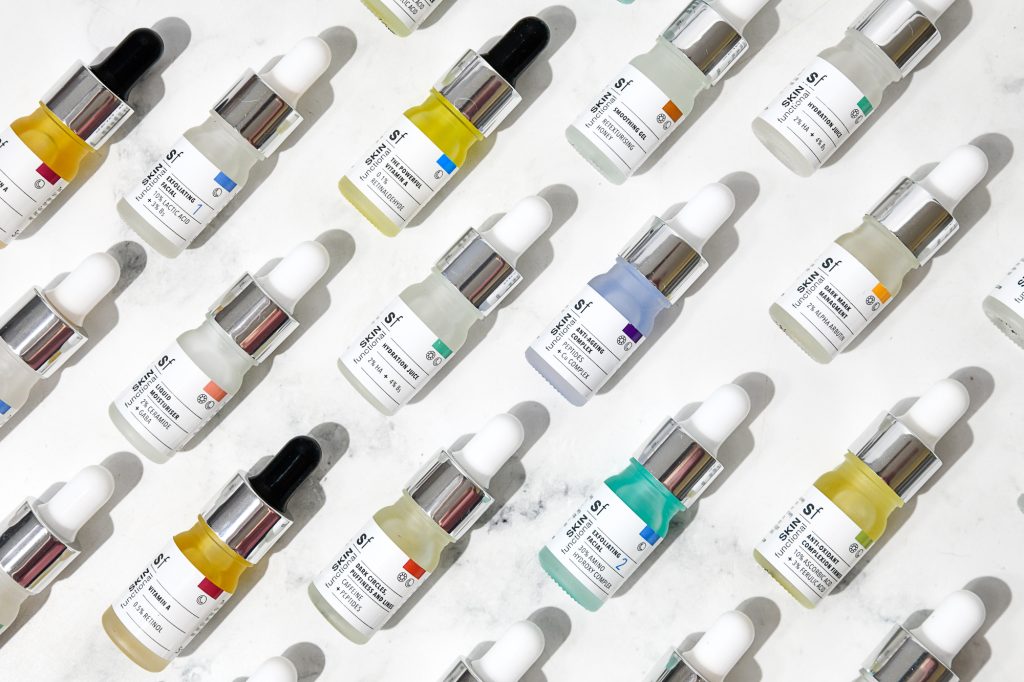
What causes hyper-pigmentation of the skin?
What causes hyper-pigmentation of the skin?
The colour of healthy skin is determined by the amount of pigment produced and stored in the upper layers of the skin. The pigment that human skin produces is called melanin and is produced by specialist cells called melanocytes. The darker the colour of skin, the more melanin per area that is produced by melanocytes. If melanocytes in a particular part of the skin are ‘persuaded’ to manufacture excess melanin, the area will be darker than the surrounding skin.
Sunspots, blemishes, melasma (the mask of pregnancy) and darkened scars are all examples where melanocytes have been stimulated to produce more melanin than they would typically have. The actual cause of the stimulation may be slightly different between these examples, but the result is the same.
Reducing pigment production is done using topical ingredients that can interact with and suppress melanocytes, which are pigment-producing cells. Accelerating shedding of the skin is easily achieved with controlled exfoliation over the dark mark, usually with some form of acidic substance.
What causes acne and how do I manage it?
What causes acne and how do I manage it?
Acne is a very common inflammatory skin disorder affecting most humans at some stage in their life. The disease occurs in skin follicles where a combination of factors results in inflammation (red, painful, swollen areas) and possibly even infection. Acne can cause permanent scarring of the skin, dark post-acne marks (blemishes) or disappear without leaving a trace.
Effective management of acne requires therapy that can address four separate elements. These include reduction of excess sebum (oil) production, reduction of excess harmful bacteria, cleaning out of blocked follicles and reducing the damaging inflammation inside the follicle. There are very few therapies that can achieve all four goals at the same time. Most home care acne treatment will contain a few different products that together give better outcomes.
Sunspots, blemishes, melasma (the mask of pregnancy) and darkened scars are all examples where melanocytes have been stimulated to produce more melanin than they would typically have. The actual cause of the stimulation may be slightly different between these examples, but the result is the same.
Reducing pigment production is done using topical ingredients that can interact with and suppress melanocytes, which are pigment-producing cells. Accelerating shedding of the skin is easily achieved with controlled exfoliation over the dark mark, usually with some form of acidic substance.
What role do anti-oxidants play in skincare?
What role do anti-oxidants play in skincare?
The ageing of skin presents as wrinkles, thinning, sagging, uneven texture, mottled pigmentation and folds. Every single sign that we see has in one way or another, been initiated by free radicals in the skin. Free radicals are produced by skin cells that have been exposed to excess sun (UV radiation), inflammation, infection, illness, radiation (x-rays) and cigarette smoking.
Free radicals can be neutralised by anti-oxidants that we acquire from certain foods, supplements or internal production.When the quantity of free radicals produced exceeds internal stores of anti-oxidants, the result is cell damage, accelerated ageing and possible cancer formation. The use of highly active, effective topical anti-oxidants is one of the most effective anti-ageing strategies to combat the effects of free radicals
Why do I have wrinkles?
Why do I have wrinkles?
Healthy skin is smooth, plump, firm and wrinkle-free because it contains large quantities of unbroken collagen, elastic proteins (elastin) and a gel-like water-binding substance called hyaluronic acid. Injury caused by pollution, sun exposure, smoking, poor diet and disease results in the accumulation of free radicals and skin harming enzymes that progressively destroy the healthy collagen, creating abnormal elastic tissue and a reduction in the essential water-binding hyaluronic acid. As a result of this long term (years to decades) progressive injury, all the vital support structures within the skin are reduced, and the surface of the skin collapses into itself, creating wrinkles.
Free radicals can be neutralised by anti-oxidants that we acquire from certain foods, supplements or internal production.When the quantity of free radicals produced exceeds internal stores of anti-oxidants, the result is cell damage, accelerated ageing and possible cancer formation. The use of highly active, effective topical anti-oxidants is one of the most effective anti-ageing strategies to combat the effects of free radicals
Why does my complexion look dull?
Why does my complexion look dull?
Skin appears dull when the surface is irregular and rough. Healthy skin maintains a bright, smooth, vibrant appearance because it is capable of regularly exfoliating dead cells from the surface, keeping only the healthy cells. The natural process of skin exfoliation is negatively affected by age, pollution, smoking, dryness, medication and illness. As natural exfoliation slows down (and it eventually does), the use of gentle home exfoliation is all that is required to encourage the natural exfoliation process, restoring a healthy, smooth, bright and youthful appearance.
Free radicals can be neutralised by anti-oxidants that we acquire from certain foods, supplements or internal production.When the quantity of free radicals produced exceeds internal stores of anti-oxidants, the result is cell damage, accelerated ageing and possible cancer formation. The use of highly active, effective topical anti-oxidants is one of the most effective anti-ageing strategies to combat the effects of free radicals
Why is my skin red and sensitive?
Why is my skin red and sensitive?
Healthy skin contains small blood vessels that deliver oxygen and nutrients. Usually, these are so small that the blood flowing through them has no visible effect other than a ‘healthy glow’ to the complexion. Persistent redness of the skin implies that ‘something’ has triggered these capillaries to dilate, allowing increased blood flow through the skin that turns the area visibly red.
The trigger for this ‘blood rush’ are chemicals released by skin cells or immune cells when exposed to allergy-triggering substances (allergens). These substances usually never penetrate through the skin; however, when the barrier of the skin has been disturbed, they reach the deeper layers of the skin and cause skin redness and associated sensitivity.
Will home exfoliation cause thinning of my skin?
Controlled home exfoliation serves a three-fold benefit; it supports the healthy shedding of excess dead skin cells, it enhances the skins ability to absorb topical skincare products, and it stimulates the ‘roots’ of the skin (the stem cells located in the base) to replicate more efficiently. The result is that skin becomes healthier and thickens the number of healthy, living layers.
It is best to use home exfoliation in conjunction with active skincare ingredients for the most ideal results.
Ingredient guideline combinations
Ingredient guideline combinations
Vitamin C
A powerful anti-oxidant.
Retinol
An analogue of Vitamin A.
Stimulates cell renewal
Alpha Hydroxy Acid
Water soluble acid.
Natural acids found in foods
Citric Acid (found in citrus fruits), Glycolic Acid (found in sugar cane), Lactic Acid (found in sour milk and tomato juice)
Malic Acid (found in apples)
Tartaric Acid (found in grapes),
Beta Hydroxy Acid
Oil soluble acid.
Salicylic Acid
Peptides
Peptides increase the production of collagen and have the ability to assist in restoring damaged skin.
Avoid combining: Vitamin C + Retinol
Vitamin C, is an ingredient with multiple mechanisms of action. Proven to be effective as an anti-oxidant, a dark spot lightener and a collagen rebuilder. As a powerful anti-oxidant, Vitamin C helps combat skin damage, caused by the sun and environmental pollution. Vitamin C also assists in lightening dark spots for a brighter more even complexion and builds collagen to reduce the look of fine lines.
Retinol is an analogue of Vitamin A, that can lighten brown spots and improve fine lines with consistent use. There is a chance that Retinol may make skin photosensitive.
Combining Vitamin C and Retinol should be avoided as these ingredients work at different pH levels. Vitamin C is formulated with a low pH of less than 3,5 while Retinol has a pH of between 5,5 – 6,3. The optimal regimen for these two ingredients it to apply Vitamin C in the morning along with sunscreen and Retinol at night.
Avoid combining: Vitamin C + Benzoyl Peroxide
Benzoyl Peroxide has the ability to oxidise Vitamin C, making Vitamin C less effective.
Combine with caution: Vitamin C + Alpha and Beta Hydroxy Acids
Both Vitamin C and Hydroxy Acids work in acidic environments so they could potentially be used together, however this combination could be more irritating for skin. A combination of Vitamin C and Salicylic Acid could work for those with oilier skin types.
Vitamin C and Niacinamide
Both ingredients are effective in the treatment of blemishes but they should always be used at different times of the day or week.
Avoid combining: Retinol + Benzoyl Peroxide
When Retinol products are combined with Benzoyl Peroxide products, their effects can cancel each other out. Avoid using potentially irritating products with Retinol such as a product containing an acid. Retinol should also be avoided after a chemical peel or resurfacing laser treatment.
Avoid combining: Retinol + Alpha and Beta Hydroxy Acids
Alpha and Beta Hydroxy Acids (AHA and BHA) are used to exfoliate the skin for optimal skin health. AHAs include Glycolic, Lactic and Citric Acid, while BHA generally refers to Salicylic Acid. When two active ingredients are used together, there is a chance that skin experiences excessive dryness, redness and irritation. To avoid this happening, it is best to use an exfoliating product and an active ingredient at different times of the day and or week. For example if you plan to do a AHA or BHA treatment at night, do not use a Retinol the same night.
Avoid combining: Glycolic acid + salicylic acid
Glycolic and Salicylic Acid are exfoliators so using them together would cause an over exfoliation of your skin. It is best to use them separately only.
Avoid combining Peptides + Alpha Hydroxy Acids
Peptides are not recommended to be used simultaneously with AHA’s as the acidic pH is not an optimal environment for peptides to be effective.
Take note of application order: Lipid (Oil) based + water based
Oil and water do not mix therefore a water based serum is always applied to the skin first and then a lipid (oil) based serum can be applied.”
Whether you’re looking to target dryness, dullness, sensitivity, pigmentation, or breakouts—SKINtelligence helps you make sense of it all. It’s more than just skincare; it’s understanding your skin’s unique needs and choosing products that work with it, not against it.
With SKINtelligence products, you’ll find no fluff—just clear, purposeful formulations powered by active ingredients and proven results. And the best part? You don’t need to be a skincare expert. Our easy-to-follow guides and helpful insights will walk you through every step, so you feel confident in the products you choose.
If you’re ready to cut through the noise and give your skin the intelligent care it deserves, SKINtelligence is your starting point. Because the smartest skincare is the kind that works with your skin—and gives you the knowledge to feel good about it.



